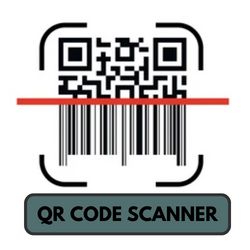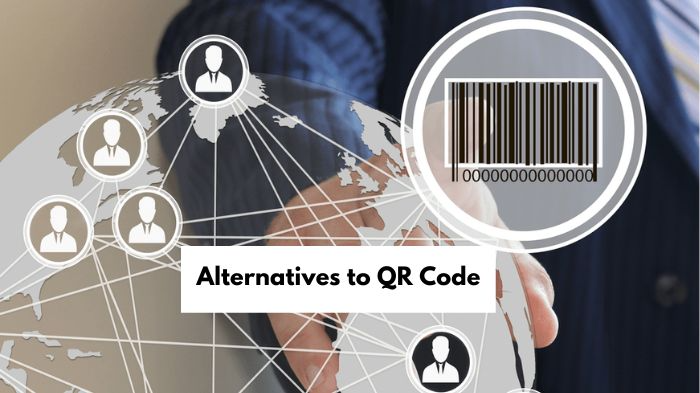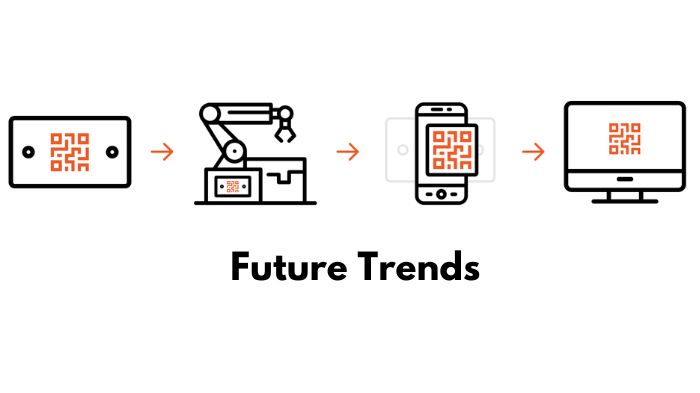
In our increasingly digital world, quick response (QR) codes have become ubiquitous, serving as a bridge between physical and digital realms. However, as technology advances, so does the need for more efficient and innovative alternatives to QR codes. This article explores various alternatives, shedding light on their advantages, applications, and the potential they hold for shaping the future of code systems.
In the ever-evolving landscape of technology, where convenience is paramount, the ubiquity of QR codes has been undeniable. From marketing materials to product packaging, these two-dimensional barcodes have seamlessly connected the physical and digital worlds. However, as we stand on the precipice of a new era in information exchange, the limitations of QR codes have become increasingly apparent.
This comprehensive exploration delves into the realm of “QR Code Alternatives,” a journey that transcends the familiar black-and-white patterns to uncover more sophisticated and efficient alternatives. As businesses and individuals seek solutions that surpass the constraints of traditional QR codes, a spectrum of innovative technologies emerges, each with its own set of advantages and unique applications.
Embark on a voyage with us as we navigate the intricacies of RFID technology, embrace the seamless interactions of Near Field Communication (NFC), and delve into the compact world of Data Matrix codes. From the immersive experiences offered by Augmented Reality (AR) codes to the security embedded in Blockchain-based codes, this article illuminates a path towards the future of code systems.
The possibilities are vast, ranging from the integration of AI in code generation to the accessibility advantages of Voice QR Codes. As we explore the landscape of biometric code systems and image recognition technology, we invite you to envision a world where the limitations of traditional QR codes are surpassed by innovative alternatives that redefine how we interact with information.
Brief Overview of QR Codes
QR codes, initially developed for tracking parts in the automotive industry, have evolved into versatile tools for diverse applications. These two-dimensional barcodes store information that can be quickly scanned using a smartphone or dedicated QR code reader.
The Need for QR Code Alternatives
While QR codes have become a staple, they are not without limitations. This section explores the reasons behind the quest for alternatives and the evolving landscape of code systems.
Anticipated Technological Shifts in Code Systems
As technology progresses, new possibilities emerge. Anticipated shifts in code systems include enhanced security features, increased data capacity, and seamless integration with emerging technologies.

Limitations of QR Codes
Size Constraints
One of the drawbacks of QR codes lies in their size limitations. As information density increases, the codes become more complex, potentially leading to scanning errors.
Dependency on Internet Connectivity
QR codes often rely on internet connectivity for content retrieval, posing challenges in areas with poor or no network coverage.
Security Concerns
While QR codes are widely used, they are not immune to security threats. This section delves into the vulnerabilities that QR codes present and the need for more secure alternatives.
RFID Technology
Introduction to RFID
Radio-frequency identification (RFID) technology utilizes electromagnetic fields to automatically identify and track tags attached to objects. This section provides an overview of RFID and its fundamental principles.
Advantages Over QR Codes
RFID offers advantages such as longer reading ranges and faster data capture compared to QR codes. Explore how RFID technology addresses the limitations of QR codes.
Use Cases in Different Industries
From inventory management to contactless payments, RFID technology finds applications in various industries. Case studies illustrate its effectiveness in optimizing processes.
NFC (Near Field Communication)
Understanding NFC Technology
Near Field Communication enables short-range communication between devices. This section demystifies NFC technology and its role in simplifying data exchange.
Seamless Interaction in Proximity
NFC’s proximity-based communication facilitates seamless interactions, making it ideal for applications like ticketing, access control, and mobile payments.
Applications in Mobile Payments
Explore how NFC technology is revolutionizing the way we make payments through smartphones, providing a secure and efficient alternative to QR code-based transactions.
Data Matrix Codes
Compact Data Storage
Data Matrix codes offer a more efficient data storage solution with their compact design. This section explains how they overcome the size constraints associated with QR codes.
Enhanced Error Correction Capabilities
With advanced error correction capabilities, Data Matrix codes ensure reliable data retrieval, even in challenging environments. Learn how this feature sets them apart.
Industrial Applications
Discover how Data Matrix codes are widely adopted in industrial settings for product tracking, traceability, and quality control, showcasing their versatility beyond consumer applications.
Beacons Technology
Proximity-Based Communication
Beacon technology leverages Bluetooth Low Energy (BLE) to communicate with nearby devices. This section explores how beacons enhance user experience through personalized interactions.
Integration with Mobile Apps
Learn about the seamless integration of beacons with mobile apps, creating opportunities for location-based marketing, indoor navigation, and context-aware content delivery.
Enhancing User Experience in Retail
Beacons are transforming the retail landscape by providing retailers with valuable insights into customer behaviour. Discover how this technology enhances the overall shopping experience.
Augmented Reality (AR) Codes
Incorporating AR into Code Systems
Augmented Reality codes blend the physical and digital worlds. This section delves into how AR codes go beyond traditional scanning, offering interactive and immersive experiences.
Real-World Applications Beyond Scanning
Explore the diverse applications of AR codes, from educational experiences to interactive advertising campaigns, demonstrating their potential to engage users in novel ways.
Interactive Marketing Possibilities
Businesses are leveraging AR codes for innovative marketing campaigns. Uncover how augmented reality enhances brand engagement and creates memorable customer interactions.
Microsoft Tag
Introduction to Microsoft Tag
Microsoft Tag is a proprietary 2D barcode technology developed by Microsoft. This section introduces the features and functionalities that set Microsoft Tag apart from traditional QR codes.
Advantages and Limitations
Examine the advantages and limitations of Microsoft Tag, including its integration with Microsoft products and its potential use cases in various industries.
Integration with Microsoft Products
Microsoft Tag seamlessly integrates with Microsoft’s suite of products. Learn how this integration opens up new possibilities for businesses using Microsoft applications.
Blockchain-based Codes
Security Features of Blockchain
Blockchain-based codes offer enhanced security through decentralized and tamper-resistant data storage. This section explores the key features that make them resilient against fraud and manipulation.
Use Cases in Authenticating Products
Discover how blockchain-based codes are employed to verify the authenticity of products, addressing concerns related to counterfeiting and ensuring consumer trust.
Future Potential in Code Systems
As blockchain technology continues to evolve, explore the potential future applications and advancements that could revolutionize code systems.
Image Recognition Technology
Basics of Image Recognition
Image recognition technology eliminates the need for traditional codes by identifying objects or patterns in images. This section provides an overview of how image recognition works.
Eliminating the Need for Traditional Codes
Examine how image recognition technology is disrupting traditional code systems, offering a more intuitive and visually appealing alternative.
Challenges and Opportunities
While image recognition brings new possibilities, it also presents challenges such as accuracy and scalability. Learn about the ongoing developments addressing these concerns.
Voice QR Codes
Introduction to Voice QR Codes
Voice QR codes utilize voice commands for information retrieval. This section explores the accessibility advantages they offer and their potential integration with smart devices.
Accessibility Advantages
Voice QR codes cater to individuals with visual impairments and provide a hands-free alternative for information retrieval. Understand the accessibility advantages they bring to the table.
Integration with Smart Devices
Explore how voice QR codes can seamlessly integrate with smart devices, creating a more intuitive and user-friendly experience for a wide range of applications.
Biometric Code Systems
Fingerprint and Retina Scanning
Biometric code systems use unique physical attributes for identification. This section discusses the security measures associated with fingerprint and retina scanning.
Security Measures in Code Authentication
Explore how biometric code systems enhance security by using individual biometric data, reducing the risk of unauthorized access and fraudulent activities.
Ethical and Privacy Considerations
While biometric technology offers robust security, ethical and privacy considerations come to the forefront. Understand the importance of addressing these concerns in code system implementations.
Comparison Chart
Visual Representation of QR Code Alternatives
Present a comparison chart highlighting the key features and differences among various QR code alternatives discussed in the article.
Key Features and Differences
Summarize the distinct features and differences of each QR code alternative, aiding readers in making informed decisions based on their specific needs.
Future Trends in Code Systems

Emerging Technologies
Explore the latest emerging technologies that have the potential to shape the future of code systems, providing a glimpse into what lies ahead.
Integration of AI in Code Generation
AI-driven advancements in code generation are on the horizon. Understand how artificial intelligence is poised to play a pivotal role in the evolution of code systems.
Predictions for the Next Decade
Based on current trends and technological advancements, make predictions for the next decade in terms of code system developments and widespread adoption.
Case Studies
Successful Implementations of QR Code Alternatives
Highlight real-world case studies where businesses successfully implemented QR code alternatives, showcasing the practical applications and benefits.
Lessons Learned from Real-World Scenarios
Examine the lessons learned from the implementation of QR code alternatives, shedding light on challenges faced and strategies employed for successful adoption.
User Feedback and Adaptation Rates
Collect and analyze user feedback on QR code alternatives, providing insights into user experiences and adaptation rates across various industries.
Challenges in Adopting Alternatives
Industry Resistance to Change
Explore the resistance encountered by industries when transitioning from QR codes to alternatives, addressing concerns and providing strategies for overcoming resistance.
Compatibility Issues with Existing Systems
Identify compatibility issues that may arise during the adoption of QR code alternatives and propose solutions for seamless integration with existing systems.
Cost and Implementation Challenges
Examine the cost implications and potential challenges associated with implementing QR code alternatives, offering practical insights for businesses considering a transition.
Recommendations for Businesses
Assessing Specific Use Cases
Guide how businesses can assess specific use cases to determine the most suitable QR code alternative, considering factors such as industry, functionality, and scalability.
Gradual Transition Strategies
Recommend gradual transition strategies for businesses looking to adopt QR code alternatives, ensuring a smooth integration without disrupting existing operations.
Collaboration with Tech Providers
Encourage businesses to collaborate with technology providers for seamless implementation, leveraging expertise and support for a successful transition.
Conclusion
Recap of QR Code Alternatives Explored
Summarize the key insights gained from exploring QR code alternatives, reinforcing the limitations of QR codes and the diverse options available.
Future Outlook for Code Systems
Offer a visionary perspective on the future of code systems, emphasizing the continuous evolution and adaptation required to stay at the forefront of technological advancements.
Encouraging Innovation in the Tech Landscape
Conclude by emphasizing the importance of innovation in the tech landscape, encouraging businesses and individuals to explore and adopt cutting-edge solutions for a digital future.
FAQs:
While QR codes serve various purposes, they have limitations, including size constraints, dependency on internet connectivity, and security concerns. Alternatives offer solutions to these challenges, providing more efficient and secure options for various applications.
RFID technology offers longer reading ranges and faster data capture compared to QR codes. It is particularly beneficial for applications like inventory management and contactless payments, where quick and efficient data transfer is essential.
Near Field Communication (NFC) allows short-range communication between devices in proximity. Unlike QR codes, NFC facilitates seamless interactions without the need for scanning, making it ideal for applications like mobile payments and access control.
Data Matrix codes are two-dimensional barcodes with enhanced error correction capabilities, offering a more efficient data storage solution. They address QR code limitations by providing compact designs that are resilient to scanning errors.
Beacons use Bluetooth Low Energy (BLE) for proximity-based communication, enabling personalized interactions in retail settings. They enhance user experience by providing location-based marketing, indoor navigation, and context-aware content delivery.
AR codes go beyond traditional scanning by incorporating augmented reality elements. They offer interactive and immersive experiences, making them suitable for applications like educational experiences and innovative marketing campaigns.
While Microsoft Tag is developed by Microsoft, it can be integrated with various products beyond the Microsoft suite. Its versatility allows businesses to incorporate it into a wide range of applications.
Blockchain-based codes utilize decentralized and tamper-resistant data storage, providing enhanced security. They ensure data integrity and authenticity, making them suitable for applications where trust is critical.
Image recognition technology identifies objects or patterns in images, eliminating the need for traditional codes. It offers a visually intuitive alternative for data retrieval and recognition.
Voice QR codes cater to individuals with visual impairments, providing a hands-free alternative for information retrieval. They can seamlessly integrate with smart devices, offering a more accessible user experience.